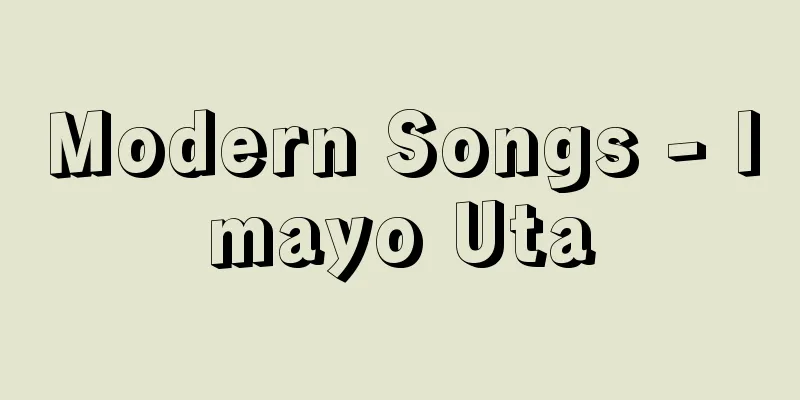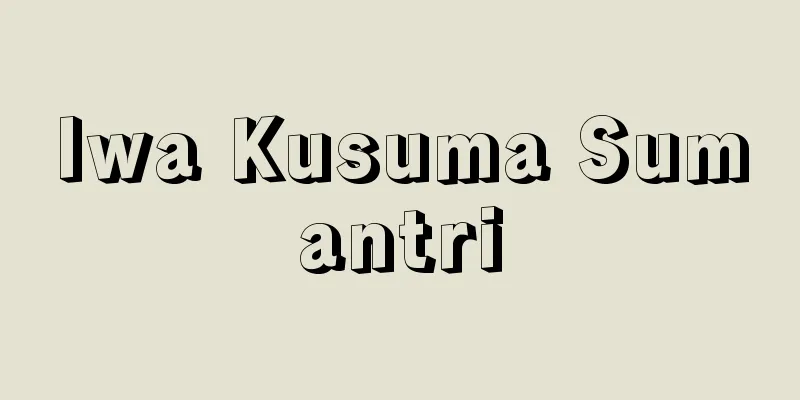Modern Songs - Imayo Uta

|
〘Noun〙 One of the Middle Ages folk songs. A new style of popular song that emerged in the mid-Heian period, as opposed to older songs such as Saibara, Fuzoku-ka, and Kagura-ka. Among these songs, there is one with a four-line form in a 7-5 rhythm that was influenced by Buddhist songs such as Wasan and Shomyo, and gagaku. ※Makura (10th century end) 280 "Nowadays, songs have become long and addictive." Source: The Selected Edition of the Japanese Language Dictionary About the Selected Edition of the Japanese Language Dictionary Information |
|
〘名〙 中古歌謡の一つ。催馬楽(さいばら)、風俗歌、神楽歌などの古い歌謡に対して、平安中期に起こった新様式の流行歌謡。また、それらの歌謡のうち、仏教歌謡の和讚や声明(しょうみょう)、雅楽の影響を受けた七五調の四句からなる形式を持つ歌謡。※枕(10C終)二八〇「いまやううたは長うてくせづいたり」
出典 精選版 日本国語大辞典精選版 日本国語大辞典について 情報 |
>>: 《Let's praise famous people now》 - Let's praise famous people now
Recommend
Sotaro Iba
1851-1903 A swordsman and educator from the Meiji...
coal-cartridge-system
...If fluidization becomes widespread, the struct...
Ojoya - Ojoya
The highest ranking village official in the Edo p...
Xingqing Prefecture (English spelling)
From the 11th to the 13th century, this was the ca...
Incense maker - Palm
A type of street vendor. In the early 18th centur...
Indonesian Dance - Indonesian Dance
Indonesian dance is broadly divided into Java, Bal...
Polyphemos
In Greek mythology, she was a sea nymph and one o...
"The beautiful one has not yet been born" - The beautiful one has not yet been born
...He moved to Tanzania in 1970, then to Lesotho,...
Bereaved family bonds - Izokukokusai
...In Japan, many bonds were issued in the early ...
Carex gibba (English spelling)
…[Tetsuo Koyama]. … *Some of the terminology that...
Rotrou, Jean de
[Born] June 1609, Dru [Died] June 28, 1650. Dru Fr...
Gas analysis
A general term for chemical analysis of gaseous s...
Neutrality (English spelling)
When a third party stands outside of a dispute or...
Universal [company] - Universal
Universal Pictures. An American film production an...
Ayaigasa (woven hat)
〘Noun〙 A hat made by weaving rush grass in a twill...









